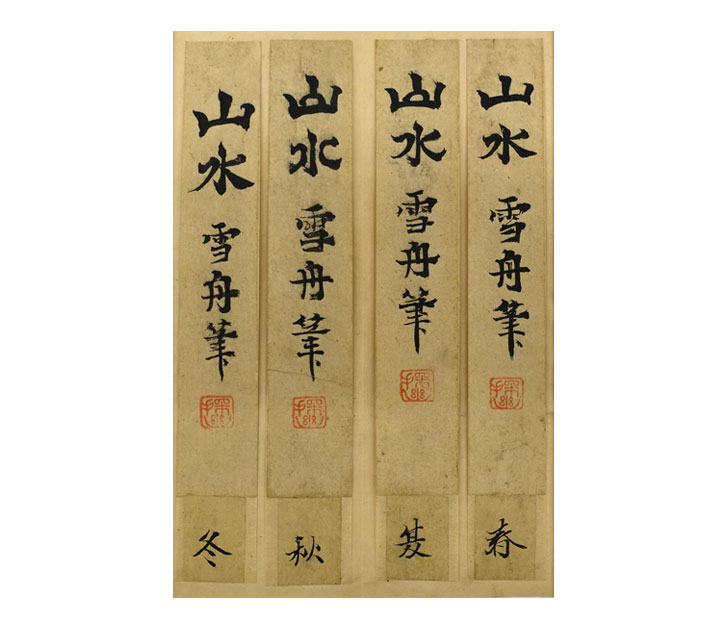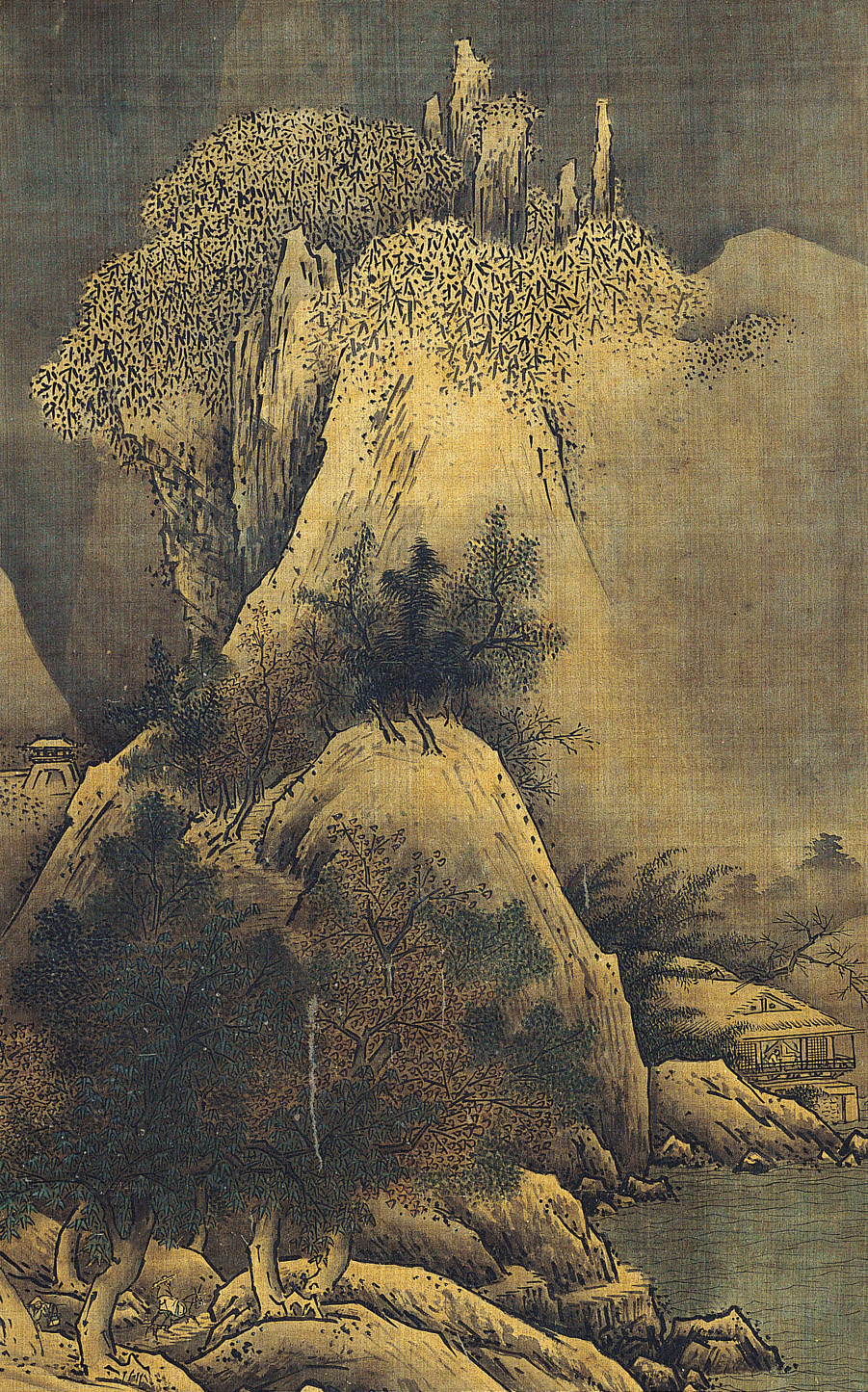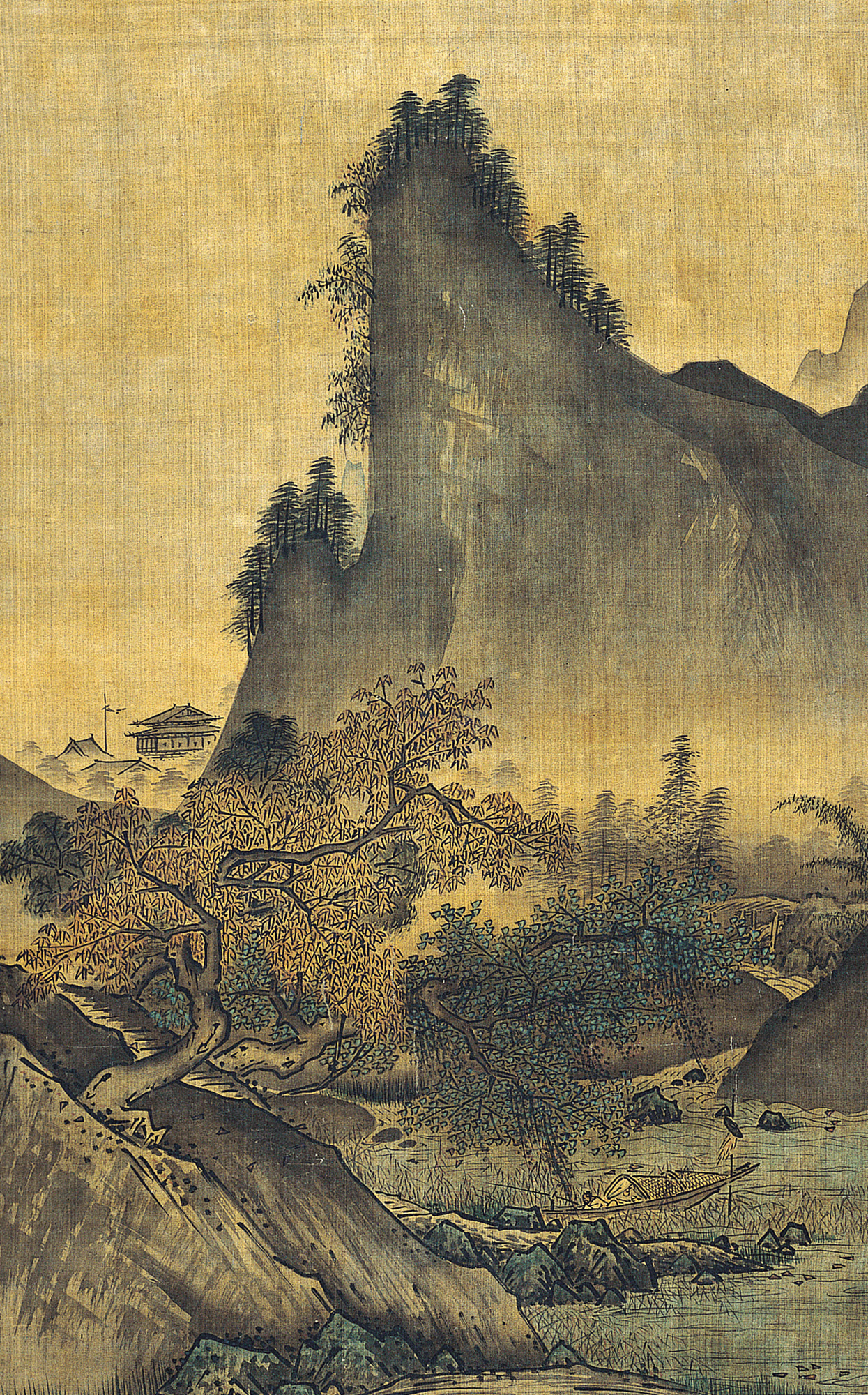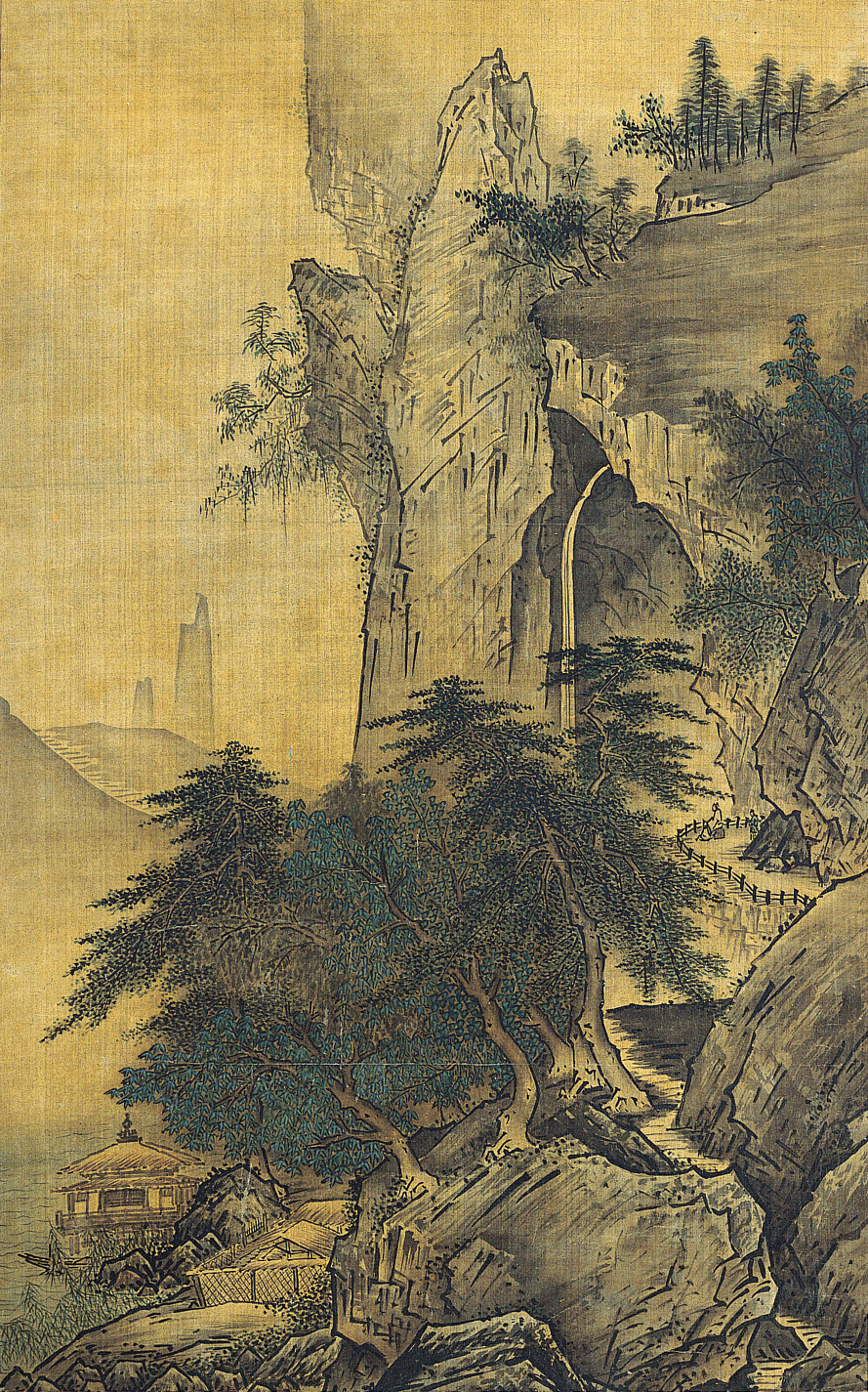These words are not by Sesshu, who created the four scrolls making up this painting, but by Kanō Tan’yū upon seeing the painting. Tan’yū was an early Edo period artist, the founder of the Kajibashi Kanō lineage. Since was also a painter by appointment to the shogunate, Tan’yū was asked to appraise a great number of paintings. For each of the paintings brought to him, Tan’yū would make a sketch of it and note the date, the name of its owner, and the result of his appraisal. Those memos are now known as the Tan’yū shukuzu (Tan’yu’s reduced-size sketches).



left:SESSHU, Spring, from Landscape of the Four Seasons, Muromachi period, 15th century, sumi and light color on silk
The upper right:Kanō Tan’yū, Tan’yū shukuzu (Tan’yū’s reduced-size sketches), Edo period, 17th century, sumi and light color on paper; Kyoto National Museum
The lower right:Kanō Tan’yū’s appraisal slips
Among them is his memo about the Landscape of the Four Seasons. Compare Sesshu’s painting and Tan’yū’s sketch, and you will see that Tan’yū, a great artist in his own right, captured the essence of the painting, in simplified form.
Several historical documents are related to this painting, including four slips, now all glued to a single sheet of paper, each bearing Tan’yū’s seal and the words sansui (landscape) and Sesshu hitsu (by Sesshu). Since each also has a character for a season (Spring, Summer, Autumn, and Winter) on it, these slips are thought to have been something like name tags, each originally glued to a separate hanging scroll. (When a scroll is rolled up, there is no way to know what the painting is.) But why would Tan’yū have made them?
It is likely that those were statements of appraisal, which Tan’yū wrote when the paintings were brought to him in 1673; they express his judgment that “These are undoubtedly paintings by Sesshu.” Indeed, a closer look at Landscape of the Four Seasons reveals that they do not bear Sesshu’s signature. Over a century had passed since Sesshu’s day, and the current owner probably wanted a certificate of authenticity.
The Tan’yū shukuzu contain a huge number of sketches with appraisals, but among them a valuation of “a thousand kan or more” was extremely high. That estimate of the value of Landscape of the Four Seasons suggests both that Sesshu’s work was popular at the time and that Tan’yū regarded this painting highly. Tan’yū was, above all, an artist himself. He did not merely make an appraisal but examined the work carefully and sketched it himself, to enhance his own skills and use what he learned from examining other paintings in his work. That is the dedicated approach that this invaluable memo suggests.
Curator:Rika Heima
※Asada Shichiuemon:Unknown
※Nakane Heijūrō:Nakane Masatomo (1616-1696), an early Edo period Tokugawa vassal. He served Tokugawa Iemitsu.



SESSHU, Winter, Autumn, Summer, from Landscape of the Four Seasons, Muromachi period, 15th century, sumi and light color on silk











On the 19th day of the second month of Kanbun 13 [1673], these hanging scrolls from the collection of Nakane Heijūrō arrived from Asada Shichiuemon. I would value them at a thousand kan or more.
About "Landscape of the Four Seasons" by Sesshu